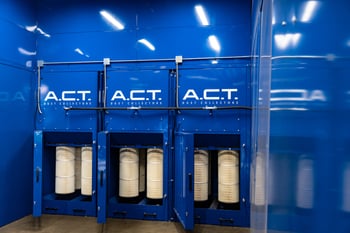 If you’re a plant manager or business owner, there are many reasons to purchase an industrial dust collector. They improve the health and safety of employees, increase productivity, lead to better product quality, help you meet compliance regulations and help to ensure happier employees.
If you’re a plant manager or business owner, there are many reasons to purchase an industrial dust collector. They improve the health and safety of employees, increase productivity, lead to better product quality, help you meet compliance regulations and help to ensure happier employees.
A dust collection system can be a big money saver when you consider the advantages of how it affects your bottom line.
Still, when making a purchase decision, you’ll need to consider both the short-term and long-term expenses to determine the true life cycle costs. When it comes to industrial dust collectors, however, price isn’t everything. To get the most efficient performance, spending a little more time determining the correct dust collector upfront pays dividends down the road.
What Goes Into the Price of Your Dust Collector?
How long will your dust collector last? And how much will it cost over its lifetime? There are no easy answers to these questions. Lifetime costs can vary significantly and are dependent on several variables.
Dust Load
Dust load is the amount or volume of dust in your work environment that needs to be removed from the air within a given time period.
Applications with heavy loading might require a different style of dust collector. A 10,000 CFM plasma cutting application, for example, may require up to a 32 cartridge dust collector, which would have 8,128 square feet of media. On the other hand, a 10,000 CFM baghouse may only require a TLM 81-10, which would only have 1,272 square feet of media. The reality is that the plasma application requires a lot more media. In addition, the footprint of those two dust collectors is very similar.
Type of Dust
Your dust properties play an important role in things like dust collector size, number of filters, type of filter media and fan size. To understand the characteristics of your dust particulate, you need to ask yourself the following:
- What is the size of the dust particles being filtered: small or large?
- Is the dust low in density, like wood chips or heavy in density, like fine steel dust?
- Are you filtering any abrasive or corrosive dust?
- Do you operate in a high-heat environment?
- Is there any moisture or oil present in the dust?
You also need to find out if your dust is combustible. The accumulation of dust and debris can pose a potentially hazardous condition — combustible dust — generated from products such as wood, metals, grains, chemicals, plastics, paper and certain textile materials. This can be very dangerous if they are not considered correctly in the design of the system.
Filter Media
The type of filter media you choose impacts your system startup and long-term maintenance costs. If your particulate is very fine but your filter media is not of the proper efficiency, you could have dust passing through your filter and being returned to your facility. Not choosing the correct media or the proper amount of media could lead to short filter life and an unnecessary cost to run your dust collector.
Bag Filters
This type of filter consists of cylindrical bags (or tubes) made of fabric. Bag filters are typically used for heavier loading applications.
- Bag filter efficiencies are closer to five microns.
- Fabric bags typically have a longer service lifecycle than cartridge filters and can handle a more demanding application with heavier dust, such as wood and grain dust.
- Bag filters are most effective when the particulate is larger and the loading is extreme.
Cartridge Filters
Cartridge filters are very efficient for fine dust and lighter loading applications, such as welding, plasma, laser, grinding, blasting and other fume or smoke applications.
- Cartridge filters operate efficiently down to .3 microns.
- Two common types of cartridge filters are:
- Nanofiber filter: Available in a standard or flame-retardant version and is extremely efficient on very fine particulate. In other words, nanofiber filters are better for very fine dust and lighter loading, whereas a polyester filter would work better with larger particulate and heavier loading.
- Spunbond polyester filter: This filter is a much heavier/thicker media and is more durable. Although polyester is typically not as efficient as nano-fiber media, it is still very efficient and more durable.
Air-to-Cloth Ratio
Air-to-cloth ratio, also referred to as air-to-media ratio, is a measurement of the amount of air going through one square foot of filter media. It is often used as a simple way to state the ratio between cubic feet per minute (CFM) and square feet of filter area. Air-to-cloth ratio is determined based on your application. Once we know the application and the required CFM, we can determine the size of the dust collector required for the optimal filter life.
Air-to-cloth ratio is important because it can give good guidance when determining the size of dust collector required for a given amount of air.
A plasma cutting application with a 1.5:1 air-to-cloth ratio, for example, could have an expected filter life of one year, whereas an ambient weld application with an air-to-cloth ratio of 3:1 could have an expected filter life of three years or more. In this example, the higher air-to-cloth ratio gives the better filter life expectancy. Cartridge collectors are typically designed to run at much lower air-to-cloth ratios than baghouses.
The True Cost of Operating a Dust Collector
When searching for a dust collection system, the price alone doesn’t tell the whole story — sometimes a less expensive system will end up costing you quite a bit more. For a more reliable cost estimate, you need to evaluate the total cost of ownership (TCO). A TCO comparison enables you to make a more accurate purchasing decision, and in the long run, saves you money.
For more information on industrial dust collector cost or to discuss your specific needs, please contact us.


























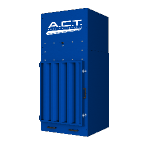
%20Collectors%20Image.png?width=143&height=143&name=ADC%20(Ambient)%20Collectors%20Image.png)
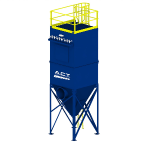

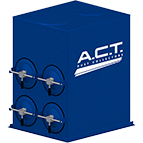
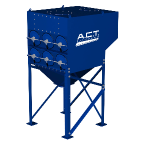
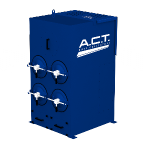


















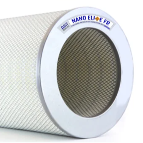


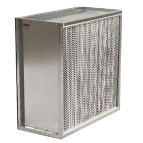

.png?width=240&height=91&name=ACT%20Dust%20Collectors%20Logo%20Solid%20White%202020%20(1).png)
.png?width=148&height=149&name=usa-manufactured-dust-collectors%20(1).png)